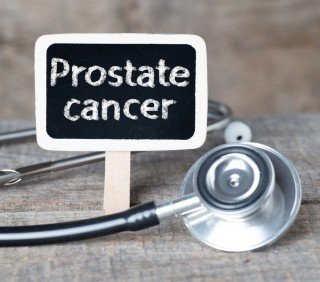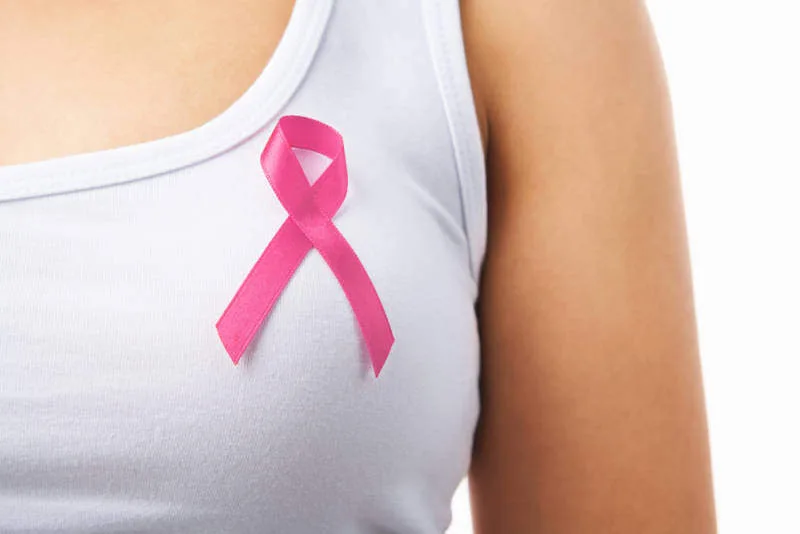Cancer – like many other health issues – does not simply stop because a swiftly spreading coronavirus appeared in late 2019. Fear of the Covid-19 virus and our over-burdened healthcare systems have led to the delayed diagnosis and treatment of cancer with inevitable, unnecessary loss of life.
The virus is still too new to draw conclusive evidence on its interactions with other illnesses, including breast cancer. That said, much can be deducted from the readily available knowledge about the coronavirus infection pathways and the general influence cancer diagnostics or therapy has on infectious diseases.

photoagent/shutterstock
Cancer in a pandemic
Most infections take place when you are in close contact (less than 1.5 m) with an infected person AND inhale tiny droplets of what they breathe out. Prime examples for such situations include large or crowded gatherings. This can include things such as public transport, hospital outpatient settings, bars and clubs, teams, and contact sports. Examples also include gatherings of any kind such as communal worship, cultural and sports events.
Recent guidelines by prominent international organizations emphasize that most of the diagnostics and care for breast cancer patients should be transferred to ‘non-hospital environments’ – such as specialist breast health clinics, to assist in reducing the negative impact on cancer diagnoses and treatments that are being globally observed (1, 2).
In making the diagnosis of breast cancer, a biopsy is necessary. I visit monthly to consult with Namibian patients from his Windhoek practice. Biopsies can, in almost all cases, be guided by mammography or ultrasound in a practice setting, i.e., outside a hospital environment.
Treatment
Most international quality guidelines emphasize that in 90+ percent of cases a diagnosis of breast cancer must be established before the patient is operated on. Diagnostic services need to be available so that a prompt and accurate diagnosis (benign vs malignant) can be provided (3).
Once the diagnosis is made, treatment consists of surgery, radiotherapy, and systemic treatments: biologicals, hormonal, and chemotherapy.
 Concerning surgery, treatment is largely uninfluenced by the pandemic. Outside an active lung infection, during which a general anesthetic would be hazardous no matter what the cause, surgery should proceed as planned as per normal indications.
Concerning surgery, treatment is largely uninfluenced by the pandemic. Outside an active lung infection, during which a general anesthetic would be hazardous no matter what the cause, surgery should proceed as planned as per normal indications.
There is a reluctance to be hospitalized for surgery due to a fear of infection. However, this can be managed by opting for day procedures, wherewith adequate anesthetic techniques, the patient could be sent home the same day of the procedure.
Hospitals have been successfully following European hospital protocols in separating and isolating suspected Covid-19 patients from other hospital patients. This helps minimize the risk of infection via surgery.
In some cases, it is possible to safely postpone surgery to a later date. This can be done by providing hormonal treatment. The treatment can halt or reverse tumor growth for six months to a year.
Hospital availability
One concern is the availability of health care resources. This includes theatre staff in hospitals during peaks of the successive waves of the virus.
Hospitals have had to prioritize the care of Covid-19 patients over patients suffering from virtually all other health care issues. In many cases, they have had to reallocate staff from theatres to assist with Covid-19 patients in wards. This is also a side effect of staff shortages due to staff falling ill with Covid-19 or isolating due to exposure.
Radiotherapy is part of many treatment regimens and is thought to be minimally affected by the virus. Radiation therapy for breast cancer does not majorly compromise immunity (4). Although small parts of the lungs are irradiated, which is undesirable in a pandemic that attacks the lungs, careful planning of radiation fields can minimize lung irradiation so that the effect on lung function is negligible. Such higher planning skills are usually available in any breast-specialized radiation service. 
Medical oncological therapy for breast cancer comes in the form of hormonal therapy, chemotherapy, and biologicals. Hormonal therapy is thought not to alter immunity and therefore, only common coronavirus precautions need to apply (5). In contrast, some chemotherapeutic agents commonly used in treating breast cancer will decrease immunity to the virus. They will likely expose the patient to a heightened risk of infection. If infected, this may lead to more severe forms of Covid-19 lung disease.
As with hormonal therapy, there is neither theoretical reason nor data to suggest that targeted treatments for breast cancer. Notably treatments targeting the HER2 receptor will affect the patients detrimentally in the case of a Covid-19 infection and should therefore proceed unchanged, but considering the usual coronavirus safety precautions.
Conclusion
Due to the novelty of the virus and its disease manifestations, there is currently no data that allows for the concrete estimation of risks. Any such estimates are mostly based on extrapolations of longstanding clinical experience. Breast cancer patients are advised to discuss the necessity of treatment. They should also discuss treatment options and their benefits within the current coronavirus circumstances with their multidisciplinary treatment team. And ultimately, not to delay with screenings or diagnoses out of fear of contracting Covid-19.
Remember that breast cancer is a highly curable disease if diagnosed early enough. Therefore, the long-term ramifications of delaying screening and diagnoses could result in one having to deal with a larger and more aggressive form of breast cancer down the line. Cancer diagnosis (of all forms) and treatment can, and should, continue throughout this pandemic.





![women [longevity live]](https://longevitylive.com/wp-content/uploads/2020/01/photo-of-women-walking-down-the-street-1116984-100x100.jpg)









